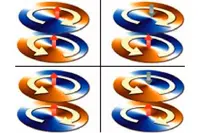 Researchers at the Helmholtz-Zentrum Dresden-Rossendorf (HZDR), Forschungszentrum Jülich (FZJ) and CNRS have designed nanoscale components that not only store information within magnetic vortices, but also enable it to be read out reliably. Using this principle, the team claims, far more data could be stored in smaller memory chips.
Researchers at the Helmholtz-Zentrum Dresden-Rossendorf (HZDR), Forschungszentrum Jülich (FZJ) and CNRS have designed nanoscale components that not only store information within magnetic vortices, but also enable it to be read out reliably. Using this principle, the team claims, far more data could be stored in smaller memory chips.
Researchers at the Helmholtz-Zentrum Dresden-Rossendorf (HZDR), Forschungszentrum Jülich (FZJ) and CNRS have designed nanoscale components that not only store information within magnetic vortices, but also enable it to be read out reliably. Using this principle, the team claims, far more data could be stored in smaller memory chips.
The work is based on detecting the orientation of magnetic vortices in nanodisks electrically. In nanodisks – very thin and small disks of ferromagnetic material – electron spins are known to form magnetic vortices. The spins – and thus the magnetic moment of the electrons – are arranged as if ordinary bar magnets were lined up in a circle.
However, at the core of the nanodisk, the magnets are aligned out of the plane of the disk. "With these two properties – the sense of circulation of the in plane magnetisation and the magnetic orientation of the core –information can be stored," said Dr Attila Kákay, a former FZJ researcher, now at HZDR. "This means we can store as much as 2bit of information using a single vortex. Two vortices stacked on top of each other can store four memory bits, corresponding to 16 different states."
This type of magnetic nanopillar with two stacked vortices is 50nm high and 150nm in diameter – making it hard to read the information. "The magnetic orientation in the core could not be read reliably because the core was simply too small," said Dr Kákay. However, during the course of experiments at FZJ, the researchers found that alternating voltage signals are emitted by the stacked vortices when connected to a direct current. The characteristic frequencies of the microwaves are used to determine the core polarity and sense of circulation of the vortices.
Author
Graham Pitcher
Source: www.newelectronics.co.uk

